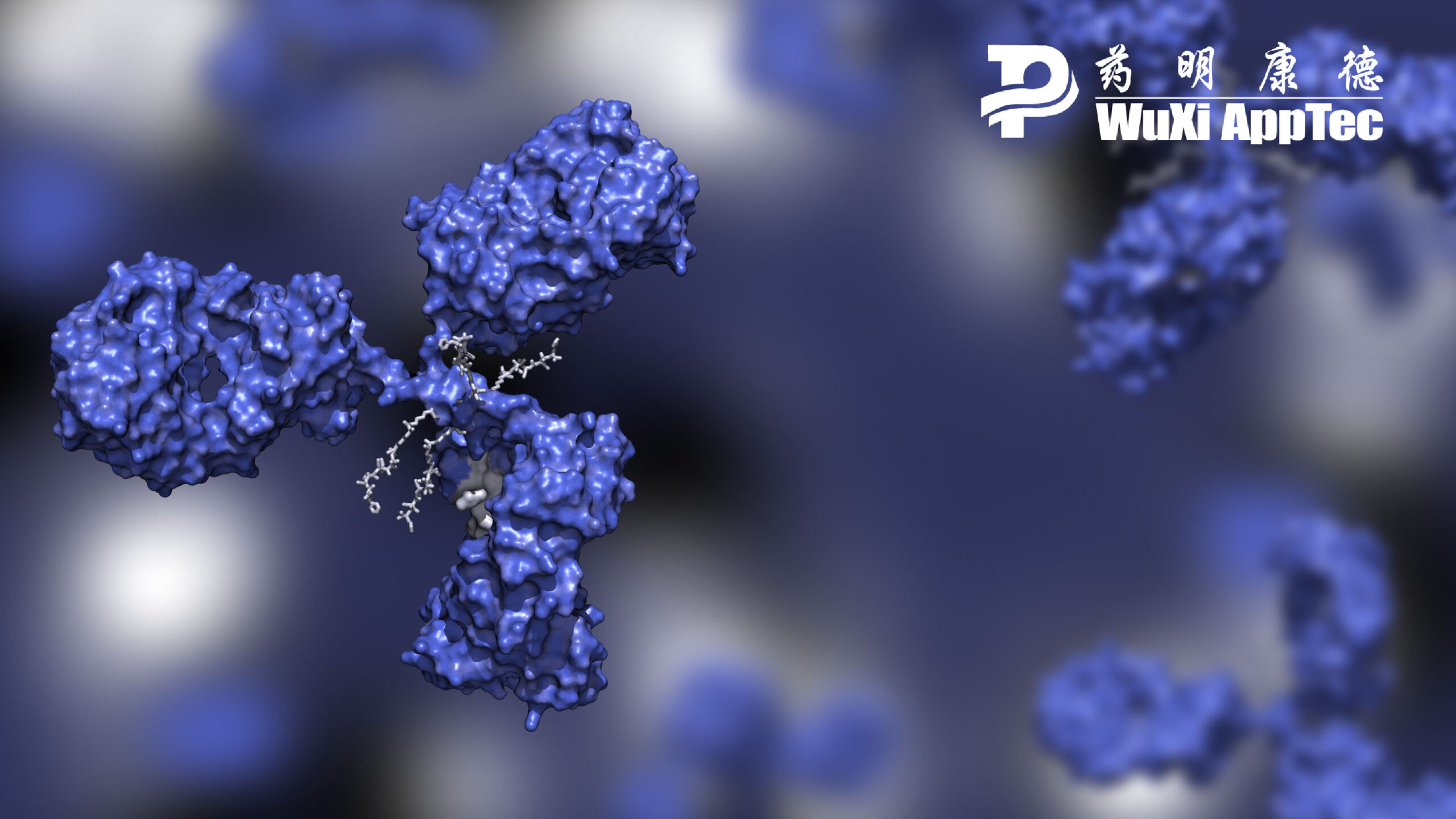Antibody-drug conjugates (ADCs) deliver targeted therapies to tumor cells while sparing healthy tissues. To ensure their safety and efficacy, it’s essential to understand how they perform in the body through DMPK testing before clinical trials.
Antibody-drug conjugates (ADCs) are targeted therapies that deliver cytotoxic drugs directly to cancer cells with minimal damage to healthy tissue. ADCs consist of three key components:
- Antibodies that target specific antigens on cancer cell surfaces.
- Linkers that connect the antibody to the cytotoxic drug, releasing the payload under specific, tunable conditions.
- Cytotoxic Drugs, or payloads, that kill targeted cancer cells upon release.
ADCs hold great promise, especially with reducing side effects and enhancing overall efficacy of treatment. However, their success hinges on thorough preclinical testing that evaluates their safety, efficacy, and pharmacokinetics.
DMPK strategies identify how ADCs perform in the body, providing insights that guide dosing, safety, and efficacy decisions. This blog article will explore three fundamental DMPK strategies for ADC development.
WACTH COMPANION WEBINAR: DMPK Strategies in the Preclinical Development of Antibody-Drug Conjugates
3 Key DMPK Strategies for ADC Drugs
1. In Vitro Payload Release
A core strategy in ADC drug development is ensuring the stability and controlled release of the cytotoxic payload. In vitro studies play a crucial role in evaluating the stability of the payload, confirming its attachment to the antibody until it reaches the intended target. In addition, in vitro studies provide valuable insights into the stability and species-specific properties of the ADC, including in humans, during the pre-clinical stage.
Assessing ADC Stability
The primary goal in ADC development is to maintain the stability of the antibody and the payload conjugated throughout the drug’s journey in the bloodstream. In vitro studies, which are especially important, help researchers determine how well the ADC holds together by measuring the concentrations of total antibody, conjugated antibody, conjugated payload, and free payload before reaching the tumor site. Premature detachment of the payload can lead to off-target effects, harming healthy tissue. Simulating various physiological conditions allows researchers to ensure the linker remains intact until delivery.
Stability of Free Payload
Once released at the tumor site, the stability of free payload becomes a concern. Unbound payloads in circulation can degrade or interact with other molecules in the bloodstream, potentially losing effectiveness or causing side effects. In vitro studies allow researchers to examine the behavior of the free payload and predict its potential to cause harm if released prematurely.
Payload-Related Molecules
The design of the payload plays a pivotal role in ADC effectiveness. Different payload molecules have distinct properties, such as chemical stability, potency, and the ability to penetrate tumor cells. These differences can significantly impact how the drug behaves within the body.
For instance, some highly potent payloads may degrade quickly in circulation, reducing their therapeutic value. Understanding these properties allows scientists to refine ADC formulations for improved effectiveness and safety.
Binding to Plasma Proteins
Once the payload is released, it may bind to plasma proteins, altering its pharmacokinetics—how it is absorbed, distributed, metabolized, and eliminated. Strong binding can limit bioavailability or speed up clearance, while weak binding can reduce stability or lead to premature degradation. In vitro studies help predict these interactions, optimizing ADC design for stability and efficacy.
2. PK Study of ADCs in in vivo Models
Pharmacokinetic (PK) studies in in vivo models help understand the in vivo behavior of ADCs. These studies examine how the ADC is metabolized and how the cytotoxic payload is released, providing dosing strategies and safety profile data.
PK Study of ADC in Relative Species
PK studies in in vivo models help researchers better predict how ADCs will behave in humans. By using commonly used pre-clinical species and the species with similar pharmacokinetic properties, researchers gain valuable insights into ADME properties. This information determines dosing regimens and helps develop understanding of drug performance in clinical trials. In vivo studies also identify potential toxicities and strategies before advancing to human trials.
Identification of Payload-Related Metabolites in Vivo After ADC Administration
In vivo PK studies also identify metabolites formed after the payload is released. These metabolites provide insight into the payload’s effects and may reveal off-target effects or potential toxicity. Understanding the metabolites allows researchers to refine the drug’s safety profile, ensuring the payload does not harm healthy cells.
3. Metabolism and Identification of Payload-Related Metabolites
Understanding the metabolism of ADCs, particularly the cytotoxic payload, is crucial for predicting therapeutic outcomes and ensuring patient safety. This strategy focuses on how the cytotoxic payload is metabolized in vivo and identifying metabolites that may impact efficacy and safety. Without this insight, the payload could break down into inactive or toxic metabolites, reducing effectiveness or harming healthy tissues. Early metabolic stability testing helps identify these risks, ensuring the drug performs as intended while minimizing adverse effects.
Metabolism Pathways of the Payload
After the payload is released at the tumor site, it undergoes metabolic transformations, often through the action of enzymes such as cytochrome P450s or esterases. These enzymes mediate the breakdown of the cytotoxic payload, leading to either active metabolites that continue targeting cancer cells or inactive metabolites with reduced therapeutic value.
Studying these metabolic pathways helps researchers predict how the payload will interact with various biological systems. Understanding whether a metabolite retains cytotoxic activity, for instance, can influence decisions on further optimization. In some cases, metabolites may interact with other molecules in the bloodstream, leading to off-target effects or reduced efficacy.
Identification of Toxic Metabolites
Some metabolites formed after payload release may exhibit off-target toxicity or unexpected pharmacological activity. These toxic metabolites can lead to harmful side effects that undermine the drug’s safety. Identifying and characterizing these metabolites early in development is critical, as it allows researchers to assess potential risks and make the necessary adjustments before advancing to human trials.
Advanced bioanalytical techniques, such as liquid chromatography-tandem mass spectrometry (LC-MS/MS) and high-resolution mass spectrometry, are vital in identifying and quantifying payload-related metabolites with high sensitivity. These techniques precisely detect low-level metabolites, ensuring that only safe, effective compounds reach patients.
Conclusion
Implementing robust DMPK strategies in ADC development is essential for optimizing their safety and efficacy. These strategies provide vital insights into the complex pharmacokinetics of ADCs, guiding accurate dose selection and identifying potential risks. By doing so, they ensure that ADCs deliver targeted, effective therapies while minimizing adverse effects, ultimately supporting successful clinical outcomes.
Partnering with an organization like WuXi AppTec can provide comprehensive DMPK support, leveraging advanced technologies and expertise to ensure the successful development of ADCs.
As a global company with operations across Asia, Europe, and North America, WuXi AppTec provides a broad portfolio of R&D and manufacturing services that enable the global pharmaceutical and life sciences industry to advance discoveries and deliver groundbreaking treatments to patients. Through its unique business models, WuXi AppTec’s integrated, end-to-end services include chemistry drug CRDMO (Contract Research, Development and Manufacturing Organization), biology discovery, preclinical testing and clinical research services, helping customers improve the productivity of advancing healthcare products through cost-effective and efficient solutions. WuXi AppTec received an AA ESG rating from MSCI for the fourth consecutive year in 2024 and its open-access platform is enabling around 6,000 customers from over 30 countries to improve the health of those in need – and to realize the vision that “every drug can be made and every disease can be treated.”


